#bustle era dress
Photo

Dressing Gown
1878-1879
United States
Peabody Essex Museum (Object Number: 133939)
#dressing gown#fashion history#historical fashion#1870s#gilded age#bustle era#1878#1879#19th century#united states#green#wool#silk#embroidery#floral#peabody essex museum#popular
8K notes
·
View notes
Text



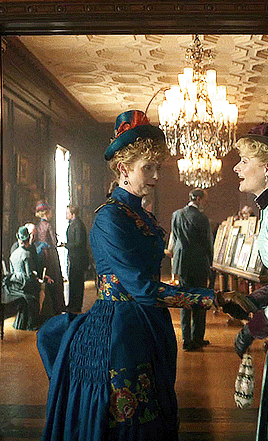
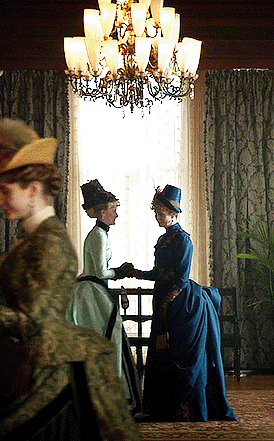

THE GILDED AGE (2022-) + FASHION HISTORY
💠Ada Brook (Cynthia Nixon) in S2E3: Head to Head
💠Afternoon dress (American, 1885-88)
#the gilded age#thegildedageedit#thegildedagesource#costumeedit#costume design#fashion history#💮💮#*meine#19th century#victorian era#gilded age#costumes#fashion#19th century fashion#afternoon dress#bustle#cynthia nixon#ada brook
214 notes
·
View notes
Text
Evening Dress, circa 1882. Museum McCord.



#victorian#victorian era#victorian fashion#19th century#fashion history#historical fashion#bustle dress
494 notes
·
View notes
Text
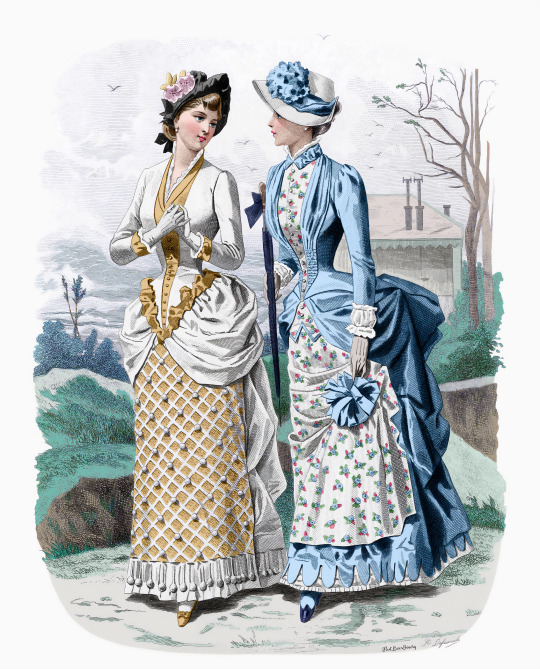
Journal des Demoiselles, 1883
#Journal des Demoiselles#1883#1880s#bustle#bustle dress#the gilded age#gilded age#Victorian#Victoriana#Victorian fashion#Victorian dress#Victorian style#Victorian era#Victorian art#Victorian girl#Victorian woman#Fashion#Fashionplate#Fashion sketch#Fashion illustration#Fashion history#Historical fashion#Historical clothing#Dress history#Vintage dress#Vintage fashion#Antique dress#Antique fashion#Antique clothing#19th century
66 notes
·
View notes
Text

Visiting dress
Silk taffeta, lace | Circa 1880
In the 1870-1880s bustles came into fashion. Those were pillows, wire or wicker frames, worn under the skirt at the back below the waist, and used to expand fullness and shape silhouette. For this purpose, frills, draperies, and pleats were also used.
The dresses were decorated with embroidery and lace. Made of taffeta, they were adorned with bows and silk ribbons. Under the dress, corset with lacing was worn. This is an exquisite and perfectly preserved visiting dress, which symbolizes the wealth and prosperity of its era.
Victoria Museum Kyiv, Ukraine
Message from the Founder of the Museum
#historical fashion#fashion history#19th century fashion#19th century#victorian fashion#bustle era#bustle era fashion#bustle#1880s dress#1880s fashion#1880s#visiting dress
394 notes
·
View notes
Text



It's the festive season, and so I'm highlighting some gowns that embody holiday spirit in color, shape, and form.
Starting with this ball gown from the late 1870s. Though the Met Museum has absolutely zero text to describe it, they did include a picture of the tag, which lets us know exactly who wore this gown: Princess, later Queen, Alexandra. The tag reads "by special appointment - Dressmaker - to H.R.H. The Princess of Wales - ELISE - 170 Regent St London."
So, we know this taffeta confection was made specifically for then Princess Alexandra by a woman Madame Elise, a fashion house run by Elizabeth Marie Louise Jaeger. Madame Elise was actually quite well-known, and not always for good reasons. In the 1860s, the lace warehouse came under fire when a young woman in her employ died of apoplexy (what we now call a stroke) due to working conditions. This, thankfully, led to demands for more oversight in dressmaking houses.
This gown, however, is peak First Bustle Era, and is rather jolly. The playful asymmetry is a lovely departure from the relative balance of previous decades, and the train is a thing of beauty. Black and red are a personal favorite. The flowers almost look like poinsettias.
#princess alexandra#first bustle era#bustle#fashion history#costume#threadtalk#textiles#historical costuming#costume history#victorian fashion#silk dress#late victorian fashion#holiday fashion
357 notes
·
View notes
Text
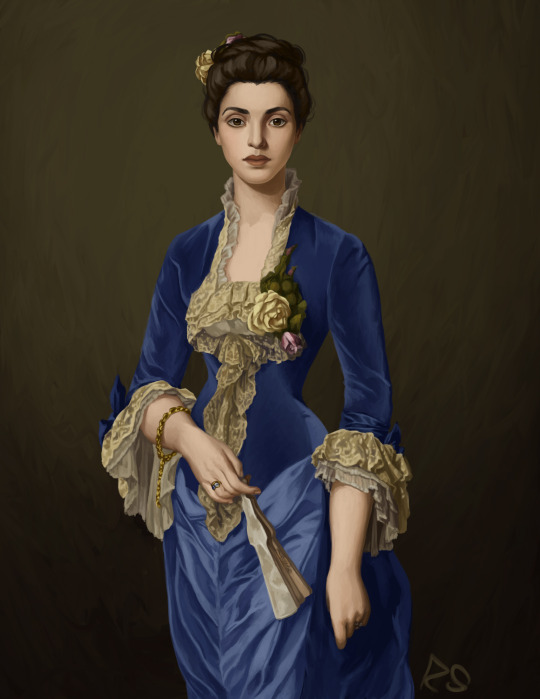
Based on the portrait of Maria Rayevskaya by Ivan Kuzmich Makarov
#1870s#1880s#1870s fashion#1880s fashion#wikipedia dates this painting between 1870 and 1889#given the dress I'd guess at late 1870s early 1880s#so#natural form era#or#second bustle period#I always feel a little bad using old painting as references but redoing the faces#like I'm hitting the original subjects with a yassification beam#oh well#my art
11 notes
·
View notes
Text
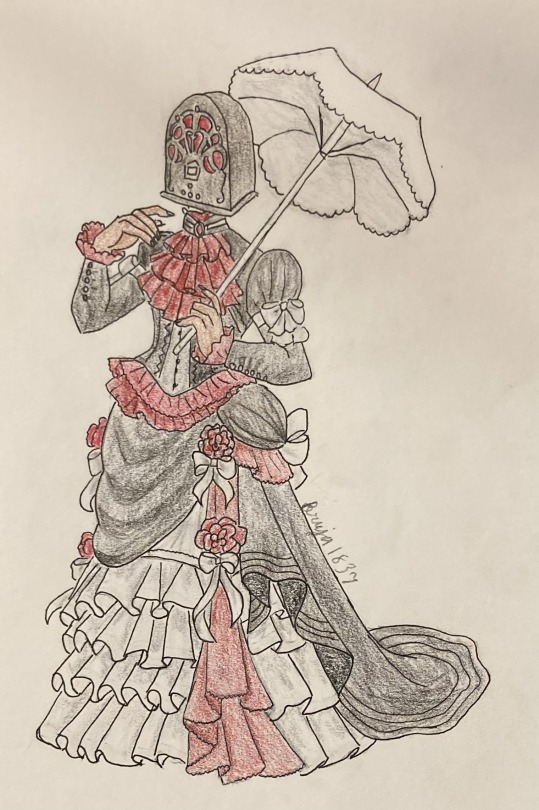
Hello listener… this is the Nighttime Radio… broadcasting live from somewhere within the infinite void of space…and I thank you for tuning in once again, to another tale lost to time…
@nighttime-radio
#Nighttime Radio#Nighttime-radio#it’s an actual blog go check it out#cannon art#I’ve recently become obsessed with Victorian fashion-#I just love drawing ruffles dkfbfbjsd#Bustle skirt#Victorian dress#victorian era#hand drawn#sketchbook#drawing#oc#cryptidcore#sketch#object heads#radio head
87 notes
·
View notes
Note
i hope this isnt too random and is something you can help me with--i'm needing a reference of someone around the 1870s-1880s running, like a dull on sprint, in a bustle dress. would that even be possible? would she just be lifting the dress part up and have the layers underneath be showing? would she pull up the crinoline (if those were worn at the time, i'm sorry i'm too lazy to research atm) as well? i hope the question isnt too broad or confusing. thank you so much!!!!
Hi! Not at all too broad or confusing question!
I'm assuming you mean the Second Bustle Era dress, since it's the more well known and iconic bustle style. The First Bustle Era was roungly the first half of 1870s, then there was Natural Form Era in the middle and the Second Bustle Era was most of 1880s. The two bustle eras were distinctive in style, but they mostly had similar layers. To illustrate the difference here's a fashion plate from the First Bustle Era and another from the second.


Yes you could run in a bustle dress. As you see especially in the Second Bustle Era dresses, the hem didn't quite reach the ground, which is really the the thing that will get in your way, if it would. As someone who has worn several different full length evening dresses (not very historical though but that's beside the point) and ran and danced in them, I can say the issues only really come when the hem reatches the ground. Then lifting the hem becomes necessary.
A type of cage crinoline was indeed used with the bustle dress, called bustle cage. Unlike the typical crinoline it was only in the back, shaped similarly as 18th century side panniers, because that's where all the volume was, so it wouldn't get in the way when running. There are though some examples of bustle cages that did go all around and simply were more volumous in the back, but I haven't seen any of them being dated into 1880s. The first bustle cage below is from 1887 and the second is from 1870-72.


A full crinoline though actually helps moving around and running. It was one of the reasons why it become so quickly so widely used in 1850s. It carries the fabric of the dresses keeping them away from the feet.
Even when lifting the hem isn't necessary, it's likely that while running the petticoat would show at least a bit. Shift hem wouldn't likely be seen as it was a bit shorter and the first layer. Petticoat was worn over the bustle cage and would help giving the fashionable silhouette, though some skirts would have a foundation skirt attached to them and then separate petticoat wasn't needed. It was most often white and had more volume in the back often in shape of ruffles. Here's couple of examples, first from 1883 and second from 1886.


I thought primary source references could be easiest to find regarding dancing and tennis. I thought it might give a nice range of different types of dresses. I didn't find useful painting of dancing in Second Bustle Era gowns, but this one from the First Bustle Era is close enough, I think.

I found two paintings depicting tennis in bustle gowns, one from the First and another from the Second Bustle Era.
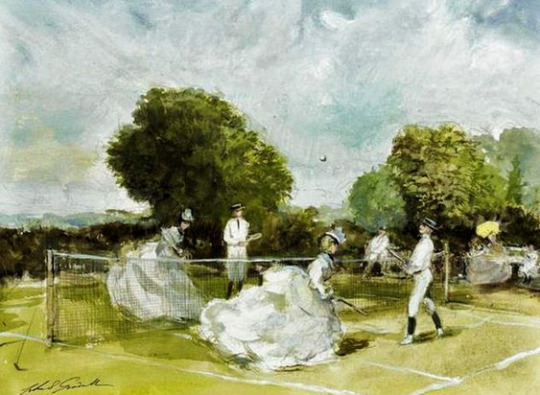

Tennis was played in the typical summer day dress, which for tennis were traditionally white. So the outfit would have all of the layers like you'd normally have and the dress would be from light breethable materials, light cotton usually, and sometimes a little more loose fitting, so it does work as a good reference for how to move in an average day dress.
Lastly I'll link here a video from Prior Attire channel, where she dresses up in about 1885 dress for tennis and demostrates playing tennis in it. It shows really well how that type of dress moves and how you can pretty easily move and run in it without having to really do anything about it. The full demonstration starts around 23:37 mark, but the full video is useful in showing all the layers that goes into it.
#answers#fashion history#historical fashion#victorian fashion#history#victorian era#first bustle era#second bustle era#bustle dress#victorian dress#victorian tennis dress#victorian sports attire#bustle cage#extant garment#fashion plate#historical painting
106 notes
·
View notes
Photo

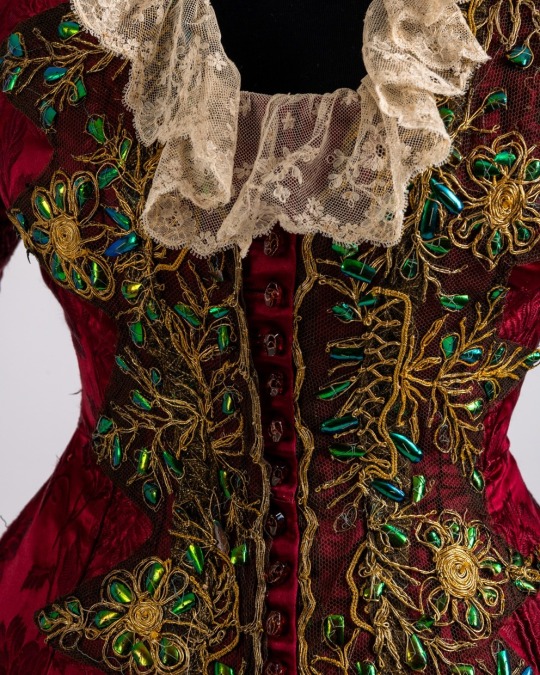


Dress
c.1881
Fashion Museum Bath Facebook
#dress#fashion history#historical fashion#1880s#victorian era#victorian fashion#bustle era#19th century#1881#red#gold#green#beetle wing#embroidery#fashion museum bath#yo fashion museum i need all the deets on this dress pls#popular
3K notes
·
View notes
Text

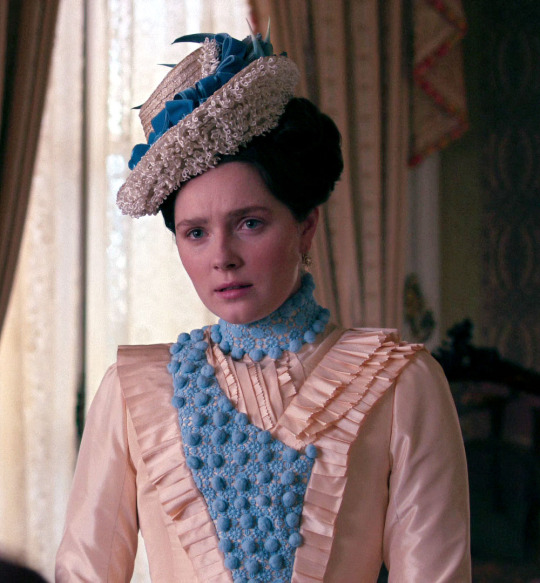
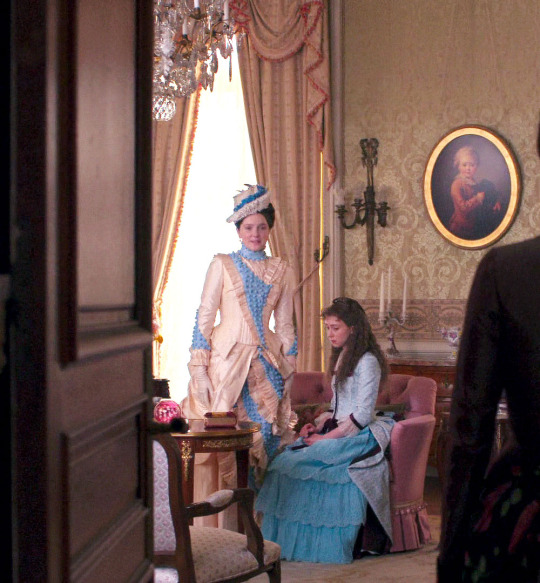


Costume design on The Gilded Age
Carrie Astor's peach dress with blue mini pom-pom detail
#the gilded age#carrie astor#19th century fashion#costume design#costumes#bustle#costume drama#historical costume#victorian era#fashion#this dress is a lot#i love it one moment and hate it the next#but i love that carrie is so fashion forward and modern in general#for reference#fashion design
60 notes
·
View notes
Text
POLONAISE WALKING DRESS, 1870s
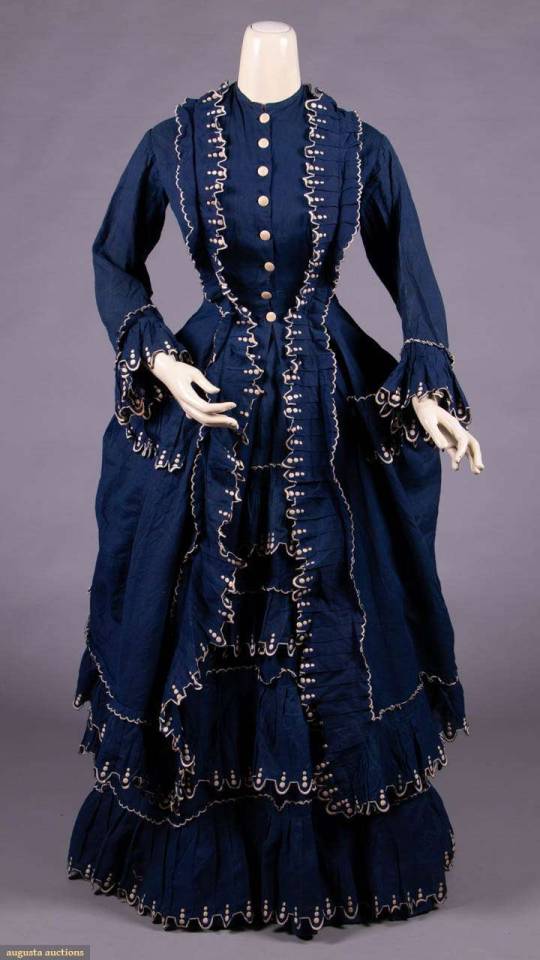


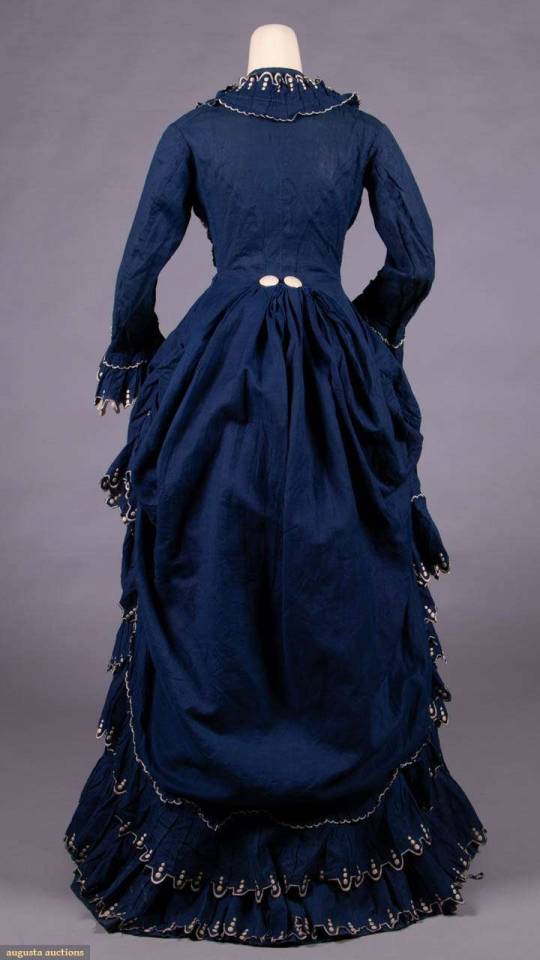
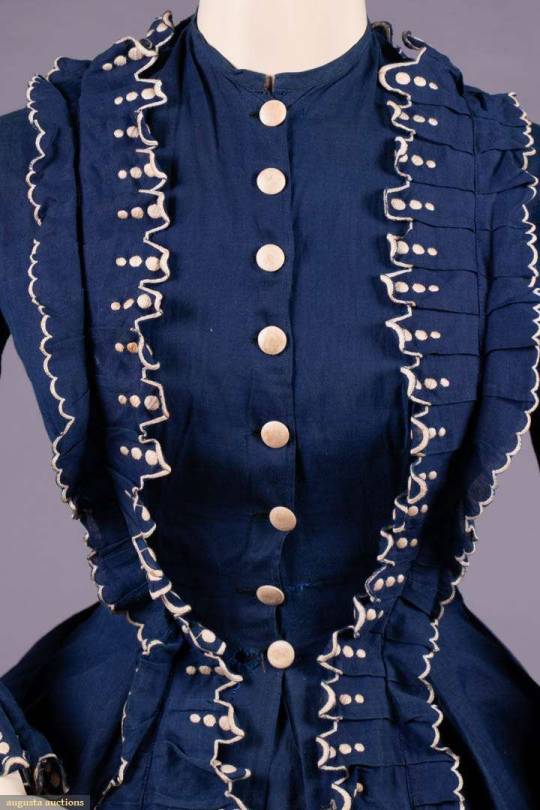



#victorian#victorian era#victorian fashion#19th century#fashion history#historical fashion#bustle dress#bustle#antique
255 notes
·
View notes
Photo


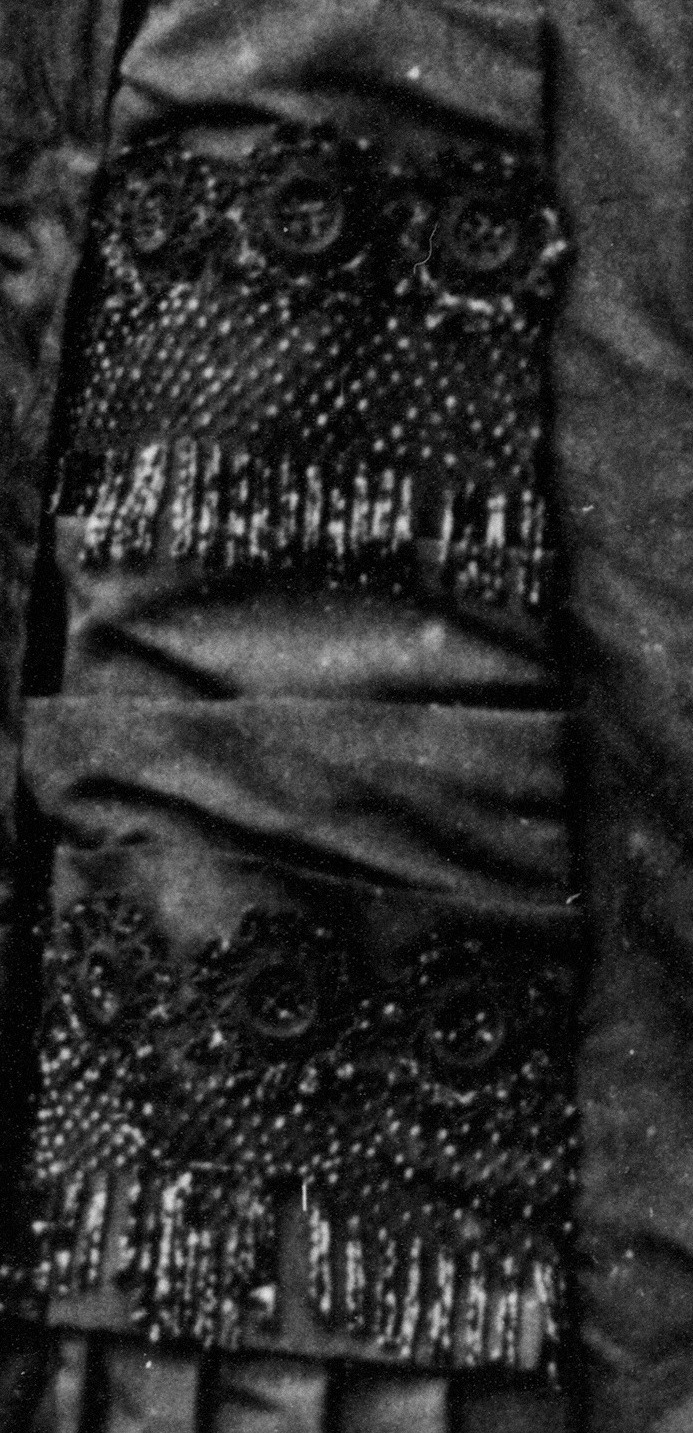
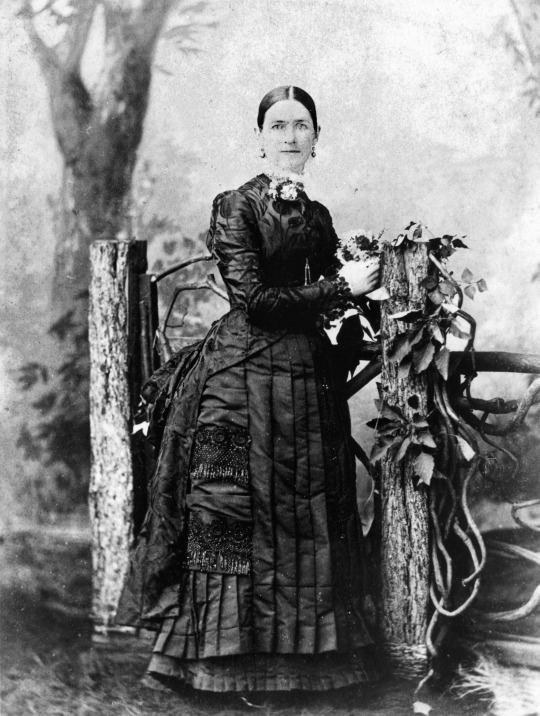
Fashion details of Georgina McLennan, ca. 1895.
Note the heavily beaded fringe trim on the side of the bustle, the abundance of pleating, the flocked velvet-look bodice with a tulip pattern, and even what appears to be a hint of a Victorian Chatalaine chain along the front of the bodice’s buttonhole line.
High res original can be found here: LINK
#chatalaine#fashion history#historical fashion#victorian era#victorian dress#victorian bustle dress#victorian bustle skirt#Victorian fashion#day dress#love the almost pom-pom lace trim effect on the sleeves#there is so much to love about this photo#fashion reference#historical reference#historical costume#victorian dressmaker#victorian dressmaking#queensland#queenslander#queensland history
33 notes
·
View notes
Text



Title: Evening dress
Department Store: Wechsler & Abraham
Date: ca. 1880
Culture: American
Medium: silk
#evening dress#historical fashion#fashion history#19th century fashion#19th century#victorian fashion#1880s fashion#bustle era fashion
25 notes
·
View notes
Text
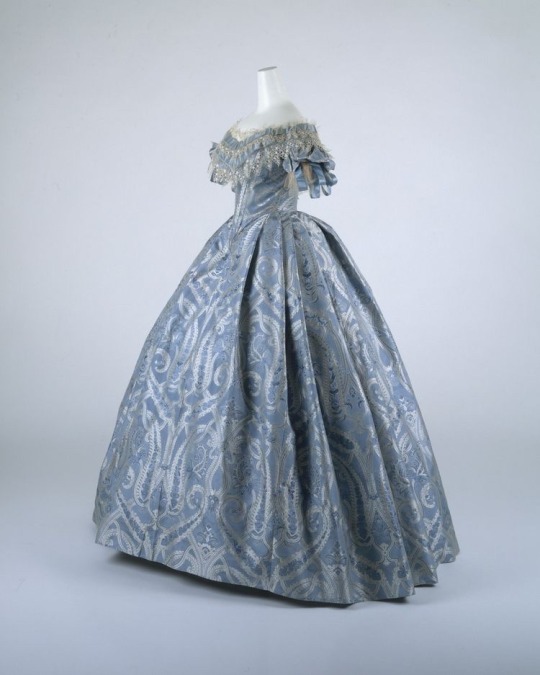

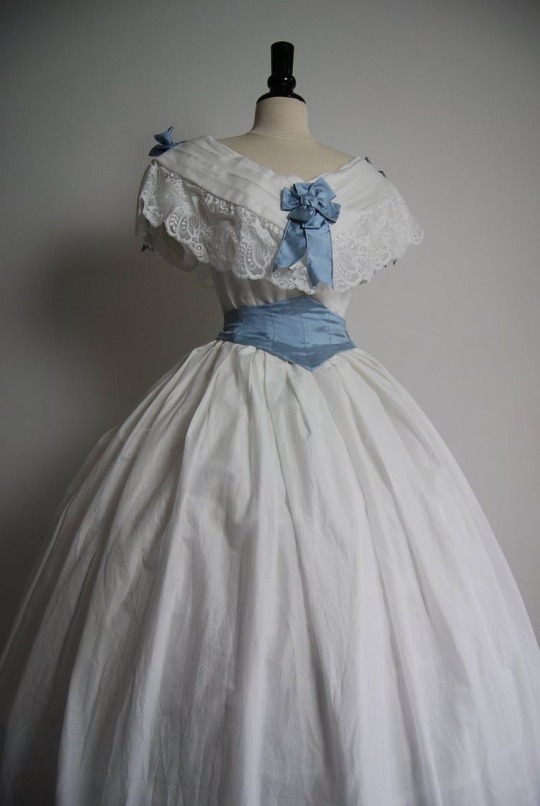
all i want is to dress like this all day every day!
image credit: 1, 2, 3,
#historical fashion#historical#fashion#victorian#victorian era#victorian fashion#crinoline#bustle#2nd bustle era#second bustle era#bustle dress#petticoats#ballgown#gown#victorian dress#1800s#1800s fashion#1800s aesthetic#mid 1800s#rambling#historian#history lover#eva’s aesthetic
75 notes
·
View notes
Text

'Unpleasant Occurrences': satirical fashion print by William Heath, dated circa 1830 by the Victoria & Albert Museum.
A dustman (sanitation worker) exclaims, "You dropp'd this here thingumbob marm." And the lady replies, "Oh daer it's my bustle."
Although clothing serving the function of a bustle has existed for centuries, dress historian Valerie Cumming dates the word "bustle" to the 1830s:
The term “bustle” was not used until ca. 1830; this is now a usual description for a device for thrusting out the skirt at the back of the waist. Innumerable forms and materials have been adopted through the centuries, from foxes’ tails (1343) to kitchen dusters (1834, Mrs Carlyle), from down cushions to wire cages. Until the 19th century, padded rolls were the usual form.
— Valerie Cumming, The Dictionary of Fashion History
Handbook of English Costume in the 19th Century by Phillis Cunnington and C. Willett Cunnington describes the bustle of the 1830s as "either a crescentic cushion or a tier of stiff frills with tapes by which it was tied on round the waist."
The tape ties can be seen in the print:
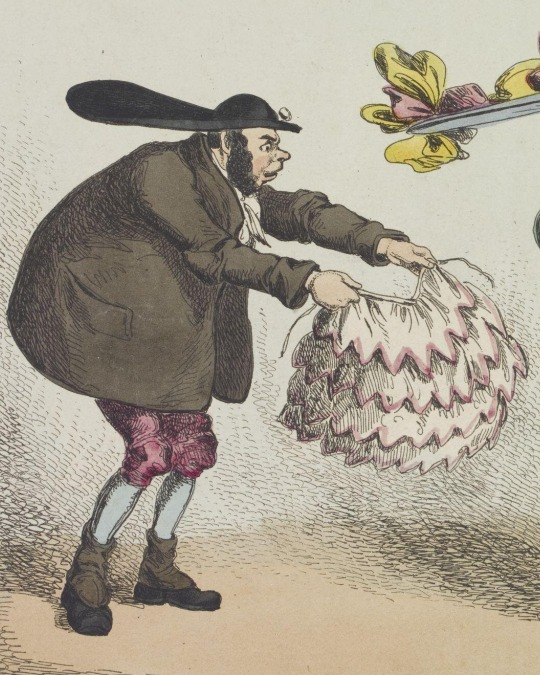
The lady's enormous hat is a late 1820s-early 1830s style. Handbook of English Costume in the 19th Century dates these hats to after 1827, and observes that during the 1830s women's hats "tended to diminish in size from the middle of the decade, becoming increasingly demure."

An 1828 caricature reproduced in Handbook of English Costume in the 19th Century. The Cunningtons caption it: "Woman in costume caricaturing tight lacing, shortening of skirts, gigot sleeves and wide shoulder line; enormous hat with excessive ribbons. The man caricaturing the dandy's tight riding coat and high stock."
#Eighteen-Thirties Thursday#1830s#fashion history#dress history#bustle#romantic era#1820s#hats#caricature#fashion#bustles#undergarments#historical fashion
55 notes
·
View notes